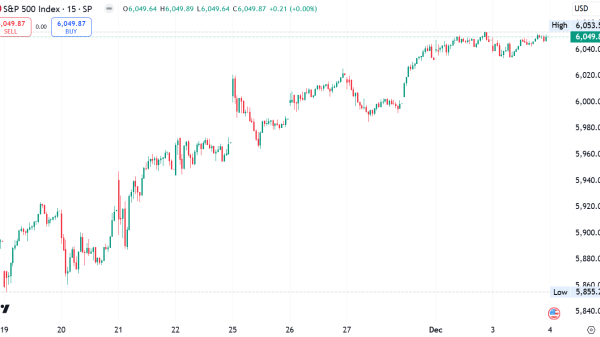Tick Trading: Strategies and Techniques for Success
Tick trading, or scalping, is buying and selling on the forex market using arbitrage on small price changes.
Using methods and strategies that are both specific and adaptable, scalping can be very profitable when dealt with in a disciplined and skilled way by the player.
Whether you are a veteran or a newcomer in the field, these findings will be helpful in terms of moving swiftly through the world of tick trading and ending up on a successful note.
The Essence of Tick Trading
Tick trading is the technique of monitoring and analyzing the tiniest fluctuations in stock prices, so-called “ticks,” in the financial markets and then trading them. It is an essential mechanism for the existence of financial markets. It allows traders to acquire stocks through small combinations of stock or currency exchanges, thereby increasing their potential profits. Tick trading has its principal advantage in that it allows traders to conclude about market behaviours and good places for investment.
Traders who look closely at price fluctuations can measure the market’s pulse at times down and up. Afterwards, they can make wiser decisions concerning the correct timing for buying and selling assets. All these positive effects directly result from the increased investor agility in the financial markets.
One of the positive sides of tick trading is that it may bring about small but consistent profits. A trader in this business can place several transactions. These transactions will ultimately give the trader the biggest profits when done quickly. This approach benefits everyone by allowing individuals to exploit the fluidity of the markets. They can capture the most lucrative actions as they come by, no matter how frequent they are.
Choosing the Best Tick Chart for Day Trading
If you’re a day trader, the tick chart’s choice may influence your strategy’s efficacy, leading to a successful investment career. Considering traders who prefer rapid trading, platforms with 34 or 50 ticks would be most suitable for their high-speed trading style.
On the other hand, 1000 ticks and 2000 ticks are the most used settings set for the typical different stock market day trading. These settings organize the trading data, which makes it balanced and based on simple trading data. One important point is that there is no “best” number of ticks to buy and sell. The optimal number varies from one person to another due to the nature of the trading strategy and preferences.
Traders with the same trading methods can use tick settings that best fit their style. The most important part is to try out more than one setting to see which one is the most comfortable and effective one to trade with. Tick charts are transaction-based, with new bars forming only after a specific number of trades. Therefore, clearer prices reduce noise, giving traders a clearer view of trading patterns.
Strategies for Effective Tick Trading
Learning these strategies can help traders gain a clear advantage in navigating tick trading challenges:
Trend Following: It permits traders to implement technical analysis tools like moving averages, trendlines, and chart patterns to distinguish potential trend reversals or continuations.
Swing Trading: With the possibility of adjusting the tick value, traders can create tick charts linked to the different swing trading timeframes. Traders can convert their adjusted tick value to shorter swings in the case of short-term swings.
Volume Analysis: Tick charts are beneficial when the volume is large because this enables one to identify a strong move accordingly.
Support and Resistance: Whether in traditional trading or not, support and resistance lines are traders’ most valuable tools. They benefit by being ready to jump in when an opportunity for a possible reversal arises.
Tick Charts vs. Time-Based Charts
Tick and time-based charts can be compared by examining their key differences and how they affect market strategies. Time-based charts form a new bar only after the completion of a predetermined time, such as one minute, five minutes, or one day. This approach allows for a fixed time slot and thus ensures the reliability of charts over certain periods. Nevertheless, it may still work as intended due to excessive or sufficient trading volume during those times.
Tick charts create a new bar after a set number of trades, irrespective of the time to reach it. This discrepancy plays in the markets that expend a lot of trade, which can be quite a drastic change in a very short time. The trading speed determines the tick charts’ operation, and thus, it remains a close-to-perfect picture of the market situation during volatility. The liquid nature allows traders to become part of the communication process at a higher level of detail and speed up the business in the market. Tick charts are valuable trading devices used by scalpers and day traders looking to keep abreast of quick market moves.
Tick Chart vs Bar Chart vs Candlestick Chart Techniques
The proficiency gained from studying tick charts, bar charts, and candlestick charts can guide traders in picking the appropriate tool for their trading strategy. Tick charts depict transaction details for trades of goods between one or more parties or groups in the market. These are presented as trading indicators that visualize the trading habits of different people in the market. One such type of chart is a tick chart. It helps traders spot prices during very short periods, enabling them to make instant decisions before high-speed market activity subsides.
On the other hand, bar charts illustrate how prices trade for security over a period. They summarize price movements using each bar’s four main values of open, high, low, and close. These charts are great for finding out general trends in the market and making decisions about holding a position for a longer period.
Candlestick charts use the body and wicks of the candle to provide clues about price movement and the degree of price volatility of security at each time. They stack bars with other visual elements to show if investment attitudes are changing and if there are opportunities for reversal. The combination of candle colours and shapes gives investors clear signals, prompting them to adjust their trading strategies or interests accordingly. Many traders appreciate these updates.
Advantages of Tick Charts in Reducing Market Noise
Market noise is price-related data that masks or changes the face of an underlying trend. Using noise reduction techniques will help investors understand the purpose and direction of the underlying trend more clearly.
Market noise, in the initial stages, that traders can remove through filtering. Traders must realize that big price swings are also part of the noise. When the price fluctuates, a signal can be difficult to spot. There is a lot of noise in traditional time-based charts as many of the candles are just intraday volatility with little value. A tick chart has the luxury of finding a silver lining in periods of low trading. A time-based chart, for instance, may include 30–40 candles. In contrast, a tick chart may show only 10–15, providing a clearer market view.
Tick charts become especially prominent during periods of high trading activity. As these charts are based on the number of trades, they plot more bars when trading volume increases, with the peaks representing the highly volatile periods. Such quality positively contributes to the velocity of the scan. In contrast to linear time-based charts, which may show a single long candle during high volatility, tick charts are verifiable by stock, which is a short pass-through. The technological aspects of the tick chart should then be touched upon to explain better how it works.
The post Tick Trading: Strategies and Techniques for Success appeared first on FinanceBrokerage.


































